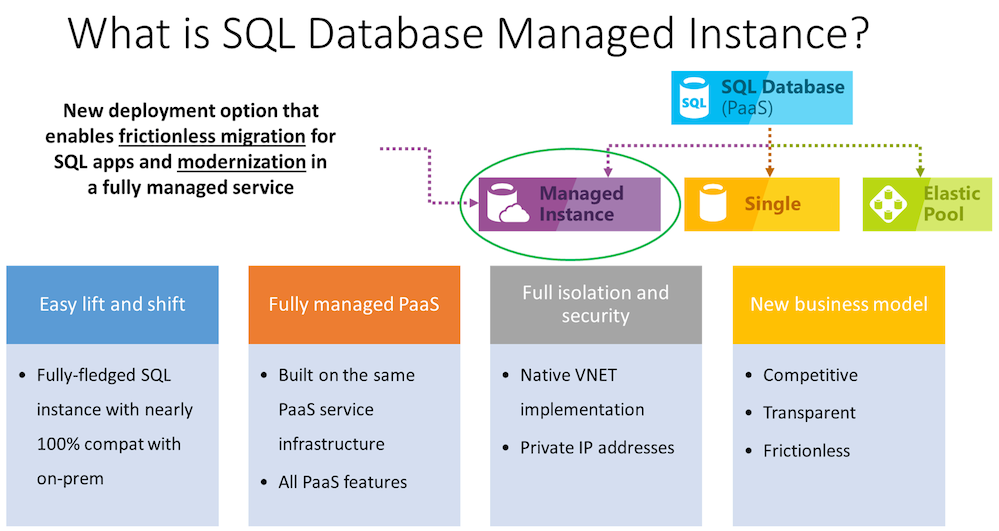

Stefanie was planning to update her knowledge on Microsoft Azure. After a good night rest, she was ready for this new adventure. She opened up her laptop, turned on the power and immediately stopped and stood up. Yep, some things will never change. First things first. Black gold. A good dark and hot ristretto to start the day. Nothing better.
A couple of seconds later, smiling broadly she started typing https://portal.azure.com in her browser. She opens up a second tab and put https://shell.azure.com. She could have used Visual Studio Code as well, but she likes to try new things as well. She was ready to learn about Managed Instances!
As she always does, she opened a OneNote and started to take notes. Right, what is a managed instance in fact, she asked herself out loud? Sipping her coffee, she rode off in the wonderful world of Managed Instances only to discover 4 hours and a large amount of caffeine later it was already lunch.
Time to write some stuff down.
She had many new questions, which she was going to think about:
• Is a managed instance the last stop for a database in the cloud or is it just the beginning?
• Do we need to change the way we look at the Azure cloud?
• Should we keep on using the same logic as we did all those years with on premise systems?
Her notes were a complete mess as she started out writing on paper all the things she did and experimented with.
What is a managed instance?
One of the things Stefanie was fond about is the fact that managed instances provided nearly 100% compatibility with the latest on premise engine. Finally, something that can cover many things we were not capable of doing when moving to an Azure database. The way Microsoft introduces this is as an easy lift and shift to the cloud, designed for customers with a large number of on premise apps, self-developed applications with a lot of complex logic.
The managed instance is also put in an isolated VNet fully isolated. (She also read a couple of Microsoft docs to see how to tackle those and they were easy to understand and implement). The key here is the low migration effort for moving this to the cloud. Wooha, this is what we need, Stefanie blurred aloud. She has setup her own first managed instance in a ‘jiffy’. The deployment of a managed instance took a bit longer, so she had time to read further.
As she reads on further, it was clear that picking the right size was a tedious task to do. She needed to take care of many configuration parameters. IO sizing seemed to be one of the major focus areas in the world of managed instances. Following link, she bookmarked to have by hand when working on this: https://docs.microsoft.com/en-us/azure/sql-database/sql-database-managed-instance-resource-limits#service-tier-characteristics
As a résumé, she borrows a screenshot from the Microsoft docs’ website. This comes in handy and gives a one shot overview of all we need to know when starting.

Stefanie always puts the source in her documents. https://docs.microsoft.com/en-us/azure/sql-database/sql-database-managed-instance
Stefanie paused for a moment and gathered her thoughts. So now, it is possible to lift and shift your database with the data migration service to an Azure SQL Database Managed Instance without much effort and without the need to redesign your application. I could actually make a business case migrating our legacy on premise monsters to Azure SQL Database Managed Instances.
Why not start with a POC on one our smallest en biggest databases. And so it happened.
Stefanie looked at her watch; it was dark outside, almost 18:00. Time to close that laptop for today and to get a bite together with her colleagues. Oh boy she already looked forward talking about this one. Still so many unanswered questions she had.
However, this is for another time. In the meantime, ask yourself the following when you have a spare moment.
• Is a managed instance the last stop for a database in the cloud or is it just the beginning?
• Do we need to change the way we look at the Azure cloud?
• Should we keep on using the same logic as we did all those years with on premise systems?
The chamber of SQL part 5: Last stop Azure SQL Database Managed Instances or First starting point Azure SQL Database Managed Instances? Coming soon.
The Chamber of SQL – part 3.
Frederik Bogaerts is SQL server DBA bij Kohera.


27 t/m 29 oktober 2025Praktische driedaagse workshop met internationaal gerenommeerde trainer Lawrence Corr over het modelleren Datawarehouse / BI systemen op basis van dimensioneel modelleren. De workshop wordt ondersteund met vele oefeningen en pra...
29 en 30 oktober 2025 Deze 2-daagse cursus is ontworpen om dataprofessionals te voorzien van de kennis en praktische vaardigheden die nodig zijn om Knowledge Graphs en Large Language Models (LLM's) te integreren in hun workflows voor datamodel...
3 t/m 5 november 2025Praktische workshop met internationaal gerenommeerde spreker Alec Sharp over het modelleren met Entity-Relationship vanuit business perspectief. De workshop wordt ondersteund met praktijkvoorbeelden en duidelijke, herbruikbare ri...
11 en 12 november 2025 Organisaties hebben behoefte aan data science, selfservice BI, embedded BI, edge analytics en klantgedreven BI. Vaak is het dan ook tijd voor een nieuwe, toekomstbestendige data-architectuur. Dit tweedaagse seminar geeft antwoo...
17 t/m 19 november 2025 De DAMA DMBoK2 beschrijft 11 disciplines van Data Management, waarbij Data Governance centraal staat. De Certified Data Management Professional (CDMP) certificatie biedt een traject voor het inleidende niveau (Associate) tot...
25 en 26 november 2025 Worstelt u met de implementatie van data governance of de afstemming tussen teams? Deze baanbrekende workshop introduceert de Data Governance Sprint - een efficiënte, gestructureerde aanpak om uw initiatieven op het...
26 november 2025 Workshop met BPM-specialist Christian Gijsels over AI-Gedreven Business Analyse met ChatGPT. Kunstmatige Intelligentie, ongetwijfeld een van de meest baanbrekende technologieën tot nu toe, opent nieuwe deuren voor analisten met ...
8 t/m 10 juni 2026Praktische driedaagse workshop met internationaal gerenommeerde spreker Alec Sharp over herkennen, beschrijven en ontwerpen van business processen. De workshop wordt ondersteund met praktijkvoorbeelden en duidelijke, herbruikbare ri...
Deel dit bericht